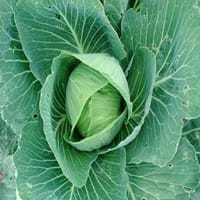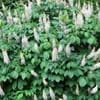Life Span
Perennial
Annual
Origin
Southeastern United States
Europe
Types
Not available
Chinese Cabbage, Napa Cabbage
Habitat
Bluffs, Coastal Regions, Stream side, Woods
Farms, Fields, Subtropical climates
USDA Hardiness Zone
5-9
4-7
Sunset Zone
Not Available
A1, A2, A3, H1, H2, 1a, 1b, 2a, 2b, 3a, 3b, 4, 5, 6, 7, 8, 9, 10, 11, 12, 13, 14, 15, 16, 17, 18, 19, 20, 21, 22, 23, 24
Habit
Spreading
Clump-Forming
Flower Color
White, Pink
Yellow
Flower Color Modifier
Bicolor
Bicolor
Fruit Color
Brown
Not Available
Leaf Color in Spring
Green
Light Green
Leaf Color in Summer
Dark Green
Not Available
Leaf Color in Fall
Lemon yellow, Yellow green
Not Available
Leaf Color in Winter
Not Available
Not Available
Leaf Shape
Palmate
Oblong Circular Round
Plant Season
Spring, Summer, Fall
Spring, Summer, Fall, Winter
Sunlight
Full Sun, Partial Sun, Partial shade
Full Sun, Partial Sun
Type of Soil
Clay, Loam, Sand
Loam, Sand
The pH of Soil
Acidic, Neutral, Alkaline
Neutral
Soil Drainage
Average
Well drained
Bloom Time
Summer, Late Summer
Spring, Summer
Tolerances
Salt, Wind
Drought
Where to Plant?
Ground, Pot
Container, Ground
How to Plant?
Cuttings, Seedlings
From bulbs, Seedlings
Plant Maintenance
Low
Low
Watering Requirements
Keep the Soil well drained, Requires regular watering
Keep ground moist, Keep the ground moist but not water-logged, Requires regular watering
In Summer
Lots of watering
Lots of watering
In Spring
Moderate
Moderate
In Winter
Average Water
Average Water
Soil pH
Acidic, Neutral, Alkaline
Neutral
Soil Type
Clay, Loam, Sand
Loam, Sand
Soil Drainage Capacity
Average
Well drained
Sun Exposure
Full Sun, Partial Sun, Partial shade
Full Sun, Partial Sun
Pruning
Remove damaged leaves, Remove dead branches, Remove dead flowers, Remove dead leaves
Remove damaged leaves, Remove dead leaves
Fertilizers
14-14-14 Fertilizer, Apply N-P-K, slow-release fertilizers
Nitrogen, Phosphate, Well-rotted manure
Pests and Diseases
Edema, Powdery mildew, Verticillium Wilt
Alternaria Leaf Spot, Anthracnose, Bacterial soft rot, Blackleg, Damping off, Damping-off, Downy mildew, Flea beetle, Flea Beetles, Fungal Diseases, fungus, Red blotch, Watery soft rot
Plant Tolerance
Salt, Wind
Drought, Heat Tolerance
Flower Petal Number
Single
Single
Fragrant Bark/Stem
No
Yes
Foliage Texture
Coarse
Coarse
Foliage Sheen
Matte
Not Available
Invasive
Sometimes
Sometimes
Attracts
Butterflies, Hummingbirds
Beetles, Flies, Insects
Allergy
Pollen
Throat itching
Aesthetic Uses
Cottage Garden, Showy Purposes
Not Used For Aesthetic Purpose
Beauty Benefits
Not Available
Not Available
Environmental Uses
Air purification, Wildlife
Air purification, Food for animals, Food for insects
Medicinal Uses
Antirheumatic, Colic, constipation, Piles
Anti-oxidant, Antioxidants, Digestion problems, Low calories, Nutrients, Skin Disorders
Part of Plant Used
Seeds
Fruits, Leaves
Other Uses
Used for making soaps
Food for animals, Used As Food, Used for its medicinal properties, Used as a spice, Used in salads
Used As Indoor Plant
No
No
Used As Outdoor Plant
Yes
Yes
Garden Design
Feature Plant, Foundation, Screening, Wind Break
Container, Edible, Herb / Vegetable
Botanical Name
AESCULUS parviflora
BRASSICA rapa( Pekinensis Group)
Common Name
bottlebrush buckeye, dwarf horse chestnut
Celery Cabbage, Napa Cabbage
In Hindi
Bottlebrush Buckeye
अजवाइन गोभी
In German
Buckeye Putzer
Sellerie Kohl
In French
Bottlebrush Buckeye
céleri chou
In Spanish
bottlebrush Buckeye
apio col
In Greek
bottlebrush Buckeye
σέλινο Λάχανο
In Portuguese
Bottlebrush Buckeye
aipo couve
In Polish
Bottlebrush Buckeye
seler Kapusta
In Latin
bottlebrush Buckeye
Brassica apium
Phylum
Magnoliophyta
Magnoliophyta
Class
Magnoliopsida
Magnoliopsida
Order
Sapindales
Brassicales
Family
Hippocastanaceae
Brassicaceae
Clade
Angiosperms, Eudicots, Rosids
Angiosperms
Tribe
Not Available
Brassiceae
Subfamily
Hippocastanoideae
Not Applicable
Number of Species
Not Available
Season and Care of Bottlebrush Buckeye and Celery Cabbage
Season and care of Bottlebrush Buckeye and Celery Cabbage is important to know. While considering everything about Bottlebrush Buckeye and Celery Cabbage Care, growing season is an essential factor. Bottlebrush Buckeye season is Spring, Summer and Fall and Celery Cabbage season is Spring, Summer and Fall. The type of soil for Bottlebrush Buckeye is Clay, Loam, Sand and for Celery Cabbage is Loam, Sand while the PH of soil for Bottlebrush Buckeye is Acidic, Neutral, Alkaline and for Celery Cabbage is Neutral.
Bottlebrush Buckeye and Celery Cabbage Physical Information
Bottlebrush Buckeye and Celery Cabbage physical information is very important for comparison. Bottlebrush Buckeye height is 180.00 cm and width 180.00 cm whereas Celery Cabbage height is 22.90 cm and width 15.20 cm. The color specification of Bottlebrush Buckeye and Celery Cabbage are as follows:
Bottlebrush Buckeye flower color: White and Pink
Bottlebrush Buckeye leaf color: Green
Celery Cabbage flower color: Yellow
- Celery Cabbage leaf color: Light Green
Care of Bottlebrush Buckeye and Celery Cabbage
Care of Bottlebrush Buckeye and Celery Cabbage include pruning, fertilizers, watering etc. Bottlebrush Buckeye pruning is done Remove damaged leaves, Remove dead branches, Remove dead flowers and Remove dead leaves and Celery Cabbage pruning is done Remove damaged leaves and Remove dead leaves. In summer Bottlebrush Buckeye needs Lots of watering and in winter, it needs Average Water. Whereas, in summer Celery Cabbage needs Lots of watering and in winter, it needs Average Water.





